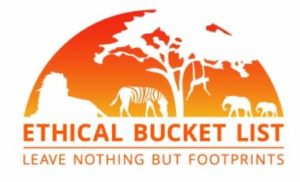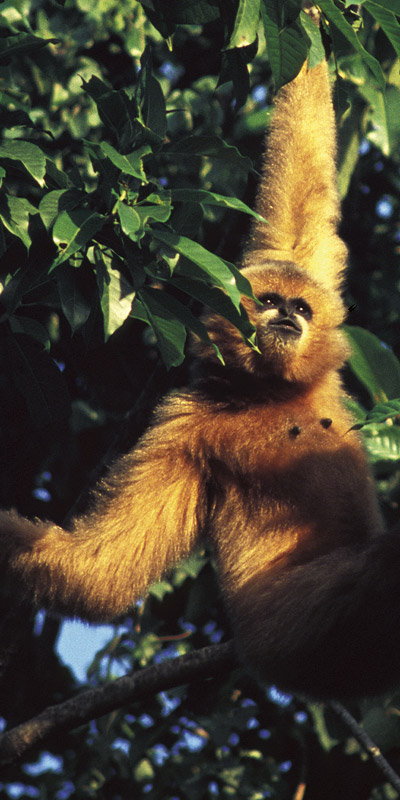The aim of Ethical Bucket List is to inspire travellers to opt for ethical choices in relation to animal tourist destinations / attractions and ensure that the value in tourism is focused on restorative and conservation animal projects. We will achieve this by raising awareness of the cruel realities and dark undertones that support much of the animal tourism/entertainment industry. A checklist with criteria is also available providing help in identifying which attractions may be unethical. Our ethical criteria will assist travellers to share their experiences, both good and bad, to our platform, which will create a database of user-generated reviews. In addition to this, Ethical Bucket List will offer a free consultancy service to investigate potential destinations/attractions which are against our ethical criteria.

Issues in Animal Tourism
Animals in tourism and entertainment are now common place. Many destinations and attractions offer the opportunity to interact with and get up close to animals (many wild / endangered). Riding, petting or swimming with wild creatures appears on many people’s bucket list. Many people are unaware of the dark undercurrent that lies beneath the selfies, rides, petting and swimming. An interest or affection for animals is not surprising, given the amazing creatures we share the planet with. However, it’s this fascination that, often unknowingly, supports the most unethical and cruel practices for animals in captivity. The reality of animal tourism is that a vast amount of it is cruel and unethical.
There are currently an estimated 560,000 animals in wildlife tourist attractions. A recent study of animal tourist attractions by Wildlife Conservation Research Unit (Wildlife CRU) found welfare abuses in 3 out of 4 destinations. Abuses include beating, harming for training purposes, substandard care, performing and giving rides.
Zoos
The definition of a zoo differs greatly in different parts of the world. There are those that take care of their animals, provide adequate veterinary care, look to replicate natural conditions and provide room to move freely. However, many don’t provide such care and there are numerous instances, throughout the world, of neglect, malnutrition, restrictive enclosures, chains and performances (such as orangutan boxing or elephants washing cars).
Street / Begging Animals
A number of animals such as elephants, bears, snakes and monkeys are used for the benefit of tourists. These animals will normally be taken from the wild when infants, beaten into submission and likely to be living under a constant threat of harm if they don’t perform or pose for the obligatory selfie.
Marine Mammal Theme Parks
These parks offer experiences and shows with mammals such as dolphins, orcas, killer whales, sea lions, etc. Many of these animals are captured from the wild when young, often witnessing the slaughter of their elders. They are then forced to perform unnatural acts. The captive environment is too small and shallow to fulfil their needs as wild mammals. Many live considerably shorter lives in captivity then their wild counterparts.
Performances / Circuses
Many wild animals are used for performances and in circuses, such as dancing bears, elephant football, snake charming, orangutan boxing, dolphin shows, holding turtles, etc. This is not natural behaviour for animals and will be the result of beatings and abuse.
Sanctuaries
Ethical Bucket List believes that wild animals belong in their natural habitat. There are occasions when animals cannot be returned to their natural habitat. In this instance, good ethical sanctuaries provide a valuable function. Thankfully, the Wildlife CRU has found many sanctuaries that have a positive impact on the animals. However, there are many other attractions that recognise the value of ethical tourism and market themselves as sanctuaries but, in reality, are no more than commercial ventures with no interest in improving the welfare of animals. We advise caution when booking a trip to a ‘sanctuary’, please see our advice on how to find an ethical sanctuary and check out our review page for further information.
Petting
Many animals are used for petting, with big cats (such as tigers and lions) being the most ‘popular’. Again, they will be taken from the wild when young or bred in captivity before being subject to beatings and the threat of harm. When they are young, they are relatively easy to handle, however, when they mature, more severe methods are employed. Many tigers in Thailand are chained, beaten and drugged. In Africa, many of the lion cubs used in the tourist industry grow to become the prey in canned hunting.
Festivals
Elephants are the most prominent animals used in religious ceremonies. A vast majority of temple elephants are located in Southern India and especially concentrated in the Kerala region. The animals are kept in camps in literally what can only be described as hellish conditions. There is no compassion or veterinary treatment for these animals and scars or injuries sustained through abuse are left to fester and worsen. The animals are usually used for religious ceremonies and festivals, during the hottest period between February and April. The elephants are draped in a Caparisoned (ceremonial robes) and a solid gold mask and paraded around for hours on end without food, water or rest. The general poor living conditions of these animals means there have been a number of human casualties and fatalities due to retaliating beasts.

Leave Nothing But Footprints
Submit a review about a tourism experience you have taken part in. Positive reviews help other tourists find ethical sanctuaries. Negative reviews help us fight back against suffering of animals in captivity.
What is an ethical experience?
Ethical Bucket List believe animals should remain in their natural habitat. The ideal form of this conservation led animal tourism, is monitoring and observing them in this habitat with non-invasive intervention from humans. Issues, such as habitat loss, human animal conflict, decline in species and poaching for animal products and unethical entertainment/tourism are occasions when this hands-off approach is not always possible. As a consequence of these issues there are many animals now living in protected lands, under guard, monitored and directed away from habitable areas, ethical breeding programmes, rehabilitation centres and sanctuaries. In order to protect and rescue animals has resulted in many having to rely on semi-captive conditions for survival.
How to find an ethical experience
Some pointers before you book your experience
- There are some very obvious experience’s that are unethical, such as street entertainment, begging animals, animals used as photographers’ props and elephant rides. These should be avoided.
- Check standards and affiliations – does the facility sign up to any environmental/welfare standards? who are they partnered/associated with?
- Background checks – ethical sanctuaries/conservation led destinations will provide background information on their rescues and work. An ethical facility will aim to create awareness and provide education for the benefit of wildlife.
- Ask questions – such as their aims, why they have been founded? Where their animals came from? How are they supporting rehabilitation and conservation?
- TripAdvisor and social media – check their reviews and posts, especially photographs, for tell tale signs of unethical activities, such as riding, selfies, stressful contact, please see our key ethical criteria


